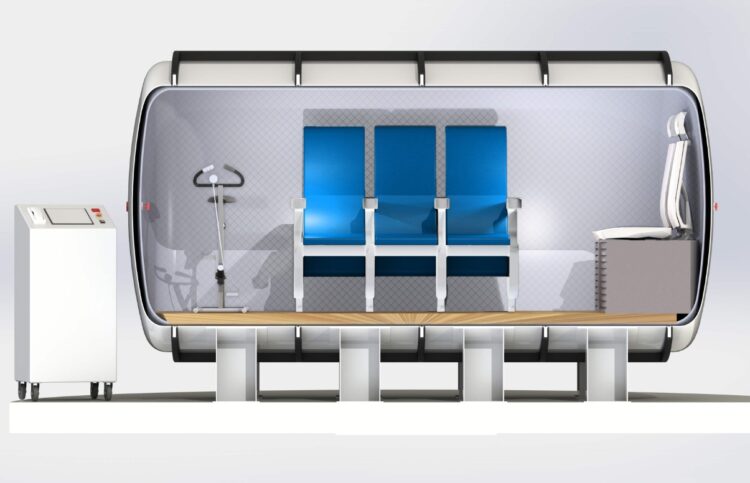Hyperbaric oxygen therapy (HBOT) is no longer just a treatment for deep sea divers with decompression sickness. It’s making waves in the fitness world for its potential benefits in workout recovery. Here’s a deep dive into how it works and whether it’s the recovery tool you’ve been looking for.
Table of Contents
What is Hyperbaric Oxygen Therapy?
In simple terms, HBOT involves breathing pure oxygen in a pressurized room or chamber. It’s like being in an environment where the air pressure is higher than what we experience at sea level. The idea is that under these conditions, your lungs can gather more oxygen than would be possible by breathing pure oxygen at normal air pressure. Read more at oxyhelp.com.
The Science Behind HBOT and Workout Recovery
When you engage in intense physical activities, your muscles get tiny injuries. This is normal and part of the process that makes muscles stronger. However, healing these micro-injuries requires oxygen and nutrients. That’s where HBOT comes into play.
The therapy floods your body with oxygen, much more than what you’d get under normal conditions. This oxygen boost is believed to speed up the healing process of muscles, reduce inflammation, and alleviate muscle soreness. Essentially, it’s like giving your muscles a super-charged environment to recover.
Real Benefits or Just Hype?
The big question is whether these theoretical benefits translate into real, noticeable improvements in workout recovery. Studies have shown mixed results. Some athletes report feeling less fatigued and quicker recovery times after using HBOT. However, scientific evidence to conclusively prove these benefits is still evolving.
Critics argue that the improvements might be due to the placebo effect or just regular rest and recovery. Supporters, on the other hand, point to the science of increased oxygen aiding in the faster repair of tissues.
Is It for Everyone?
Before you rush to try HBOT, consider this. It’s not a magic pill. Proper diet, hydration, and traditional rest are still king when it comes to recovery. Also, HBOT can be costly and time-consuming, with sessions typically lasting around 90 minutes. Plus, it’s not suitable for everyone; people with certain health conditions, like ear problems or severe asthma, should avoid it.
Understanding the Practicality of HBOT for Regular Workouts
If you’re an everyday gym-goer, integrating HBOT into your routine might seem over the top. For professional athletes, the marginal gains from such therapies can be the difference between winning and losing. But for most of us, the cost and effort may not justify the benefits. The practicality of using a hyperbaric chamber regularly hinges on your fitness goals, budget, and how much you value those potential extra gains in recovery speed.
Balancing Traditional Recovery Methods with HBOT
It’s crucial to remember that HBOT shouldn’t replace traditional recovery methods. Good sleep, proper nutrition, hydration, and rest days are the foundation of effective recovery. Think of HBOT as a potential add-on, not a substitute. If you decide to try it, it should complement, not overshadow, the basics of recovery.
Exploring the Safety Aspect
Safety is a significant concern with HBOT. While it’s generally considered safe, it’s not without risks. Potential side effects include ear pressure, sinus pain, and in rare cases, oxygen toxicity. These risks underscore the importance of undergoing HBOT under medical supervision and not as a DIY recovery method.
Personalized Approach to Recovery
Every athlete’s body responds differently to various recovery methods. What works for one might not work for another. If you’re considering HBOT, it might be worth trying a few sessions to see how your body reacts. Monitor your recovery closely and decide if the benefits are significant for you.
Exploring the Future of HBOT in Workout Recovery
The future of hyperbaric oxygen therapy in workout recovery is an exciting realm to watch. As research continues, we may find more definitive answers about its effectiveness. We’re in an era where the intersection of technology and health is evolving rapidly. The next few years could see HBOT becoming more accessible and affordable, potentially making it a more viable option for the average fitness enthusiast.
The Role of Individual Experimentation
In the world of fitness and recovery, personal experimentation often leads the way. If you’re intrigued by HBOT, trying it out might be the best way to understand its impact on your body. Keep track of your recovery times, muscle soreness, and overall performance. These personal insights can be as valuable as the broader scientific research in determining the role of HBOT in your fitness regimen.
Balancing Expectations with Reality
It’s essential to approach HBOT with realistic expectations. While some may experience noticeable improvements in recovery, others might find the differences subtle or even negligible. This variance is a normal part of how different bodies respond to the same treatment. The key is to balance optimism with a grounded understanding of what HBOT can and cannot do.
Integrating HBOT with Holistic Wellness Practices
Consider HBOT as part of a holistic approach to wellness. Alongside this therapy, focus on other aspects of health, like mental well-being, stress management, and balanced nutrition. The synergy of these elements often produces the best results in physical recovery and overall health.
Consulting with Professionals
Before diving into HBOT, it’s wise to consult with fitness experts and healthcare professionals. They can provide guidance based on your health history, fitness level, and specific recovery needs. This personalized advice is crucial in making informed decisions about new treatments like HBOT.
Concluding Thoughts
Hyperbaric oxygen therapy presents a fascinating addition to the toolbox of workout recovery methods. Its potential benefits, coupled with ongoing research and personal success stories, make it a topic worth exploring for anyone serious about fitness and recovery.
Remember, the journey to optimal recovery is personal and ever-evolving. Stay informed, listen to your body, and make choices that best suit your unique fitness journey.




